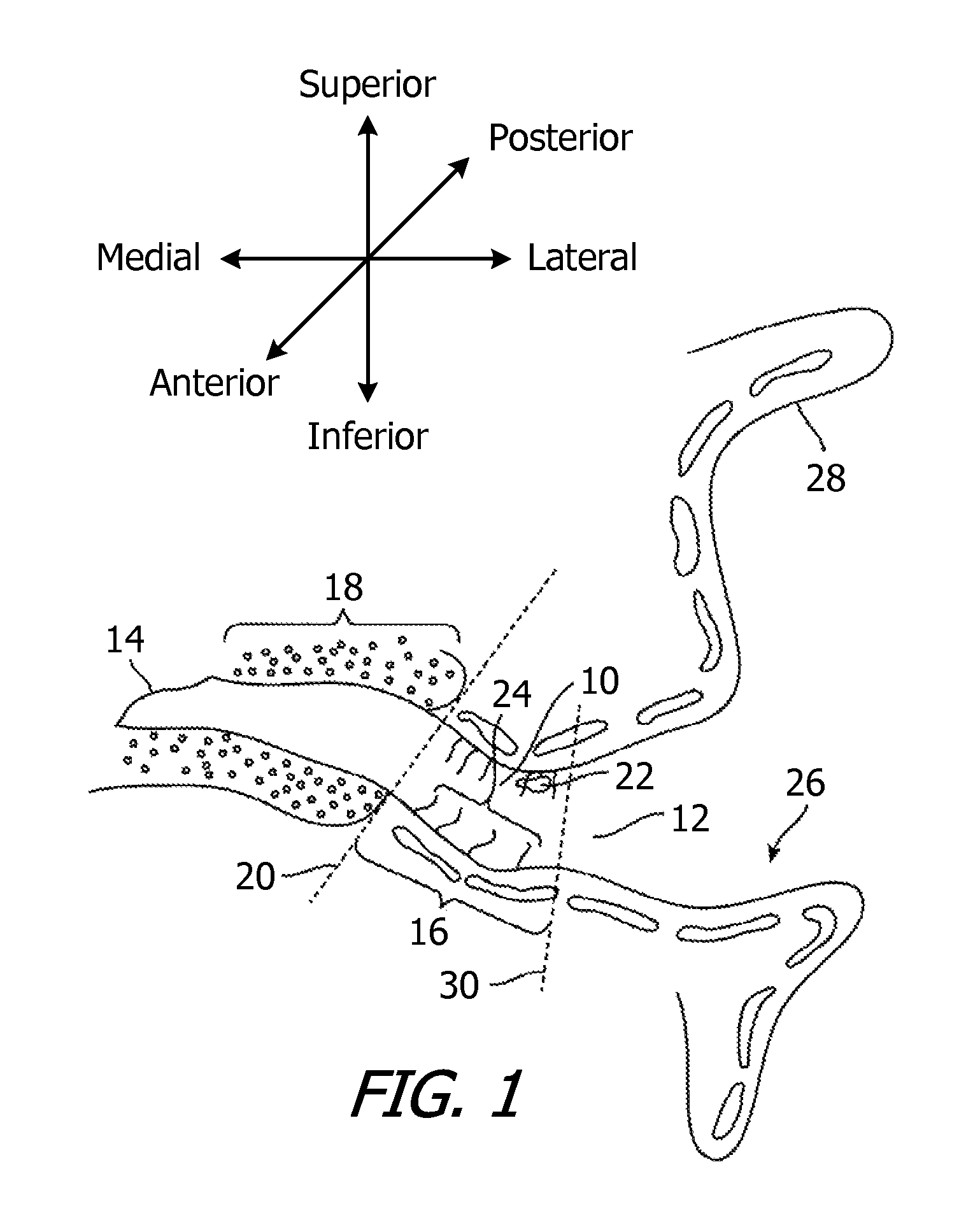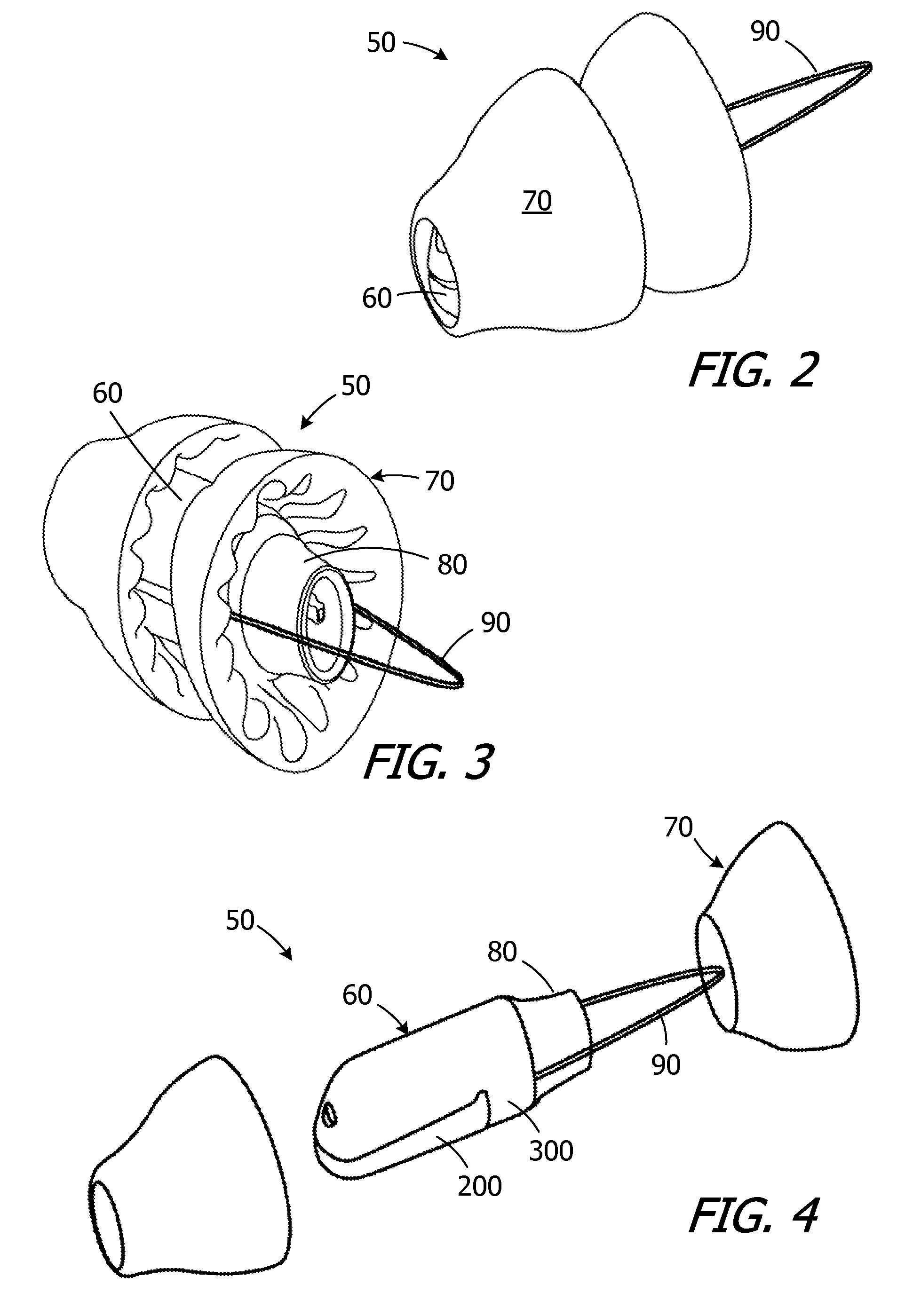Canal hearing devices and batteries for use with same
a hearing device and canal technology, applied in the field of hearing devices, can solve the problems of low output efficiency and the usual challenges, button cells are not sufficiently volumetrically efficient, and the button cells are not sufficiently efficien
- Summary
- Abstract
- Description
- Claims
- Application Information
AI Technical Summary
Benefits of technology
Problems solved by technology
Method used
Image
Examples
Embodiment Construction
[0066]The following is a detailed description of the best presently known modes of carrying out the inventions. This description is not to be taken in a limiting sense, but is made merely for the purpose of illustrating the general principles of the inventions. Referring to FIG. 1, it should also be noted that as used herein, the term “lateral” refers to the direction and parts of hearing devices which face away from the tympanic membrane, the term “medial” refers to the direction and parts of hearing devices which face toward tympanic membrane, the term “superior” refers to the direction and parts of hearing devices which face the top of the head, the term “inferior” refers to the direction and parts of hearing devices which face the feet, the term “anterior” refers to the direction and parts of hearing devices which face the front of the body, and the “posterior” refers to the direction and parts of hearing devices which face the rear of the body.
[0067]As illustrated in FIGS. 2-4,...
PUM
 Login to View More
Login to View More Abstract
Description
Claims
Application Information
 Login to View More
Login to View More - R&D
- Intellectual Property
- Life Sciences
- Materials
- Tech Scout
- Unparalleled Data Quality
- Higher Quality Content
- 60% Fewer Hallucinations
Browse by: Latest US Patents, China's latest patents, Technical Efficacy Thesaurus, Application Domain, Technology Topic, Popular Technical Reports.
© 2025 PatSnap. All rights reserved.Legal|Privacy policy|Modern Slavery Act Transparency Statement|Sitemap|About US| Contact US: help@patsnap.com



